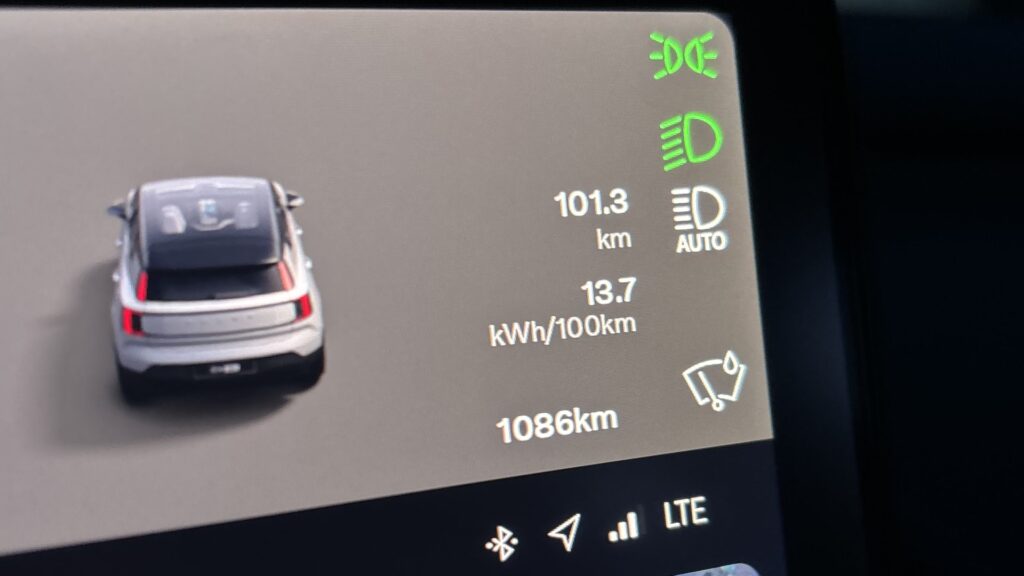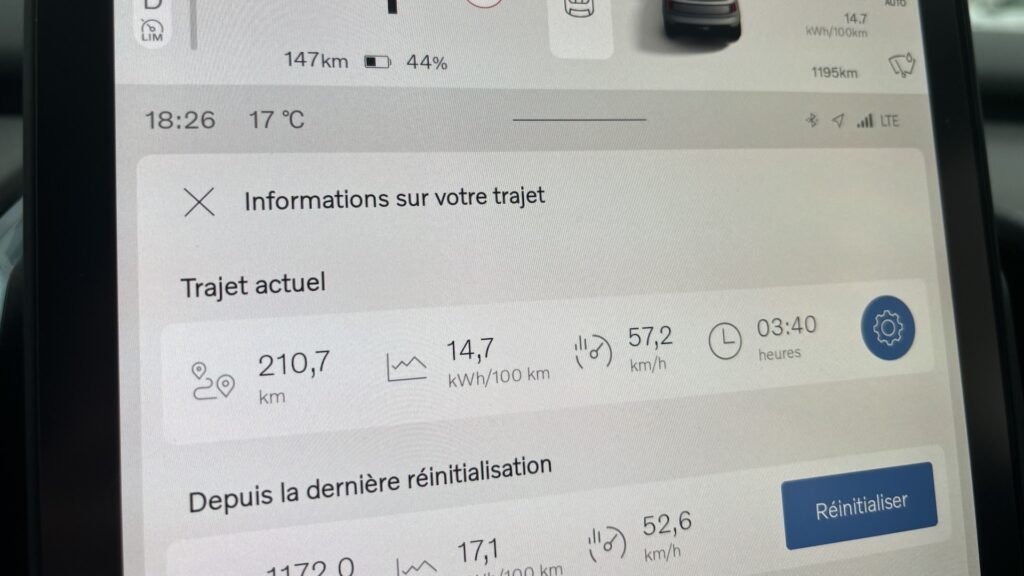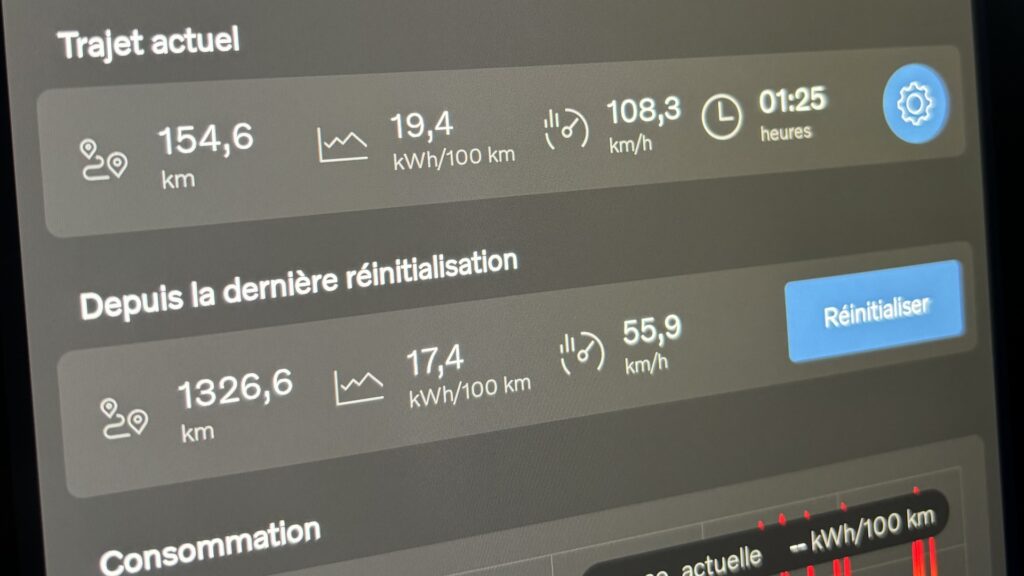We drove more than 1,000 kilometers with a Volvo EX30, the most affordable 100% electric SUV from the Swedish car manufacturer. The opportunity to get a good idea of its real consumption, one of the most important criteria for a 100% electric car.
On March 6, 2024, after more than six months of waiting, I went to pick up my Volvo EX30, Extended Range model, with an intermediate Plus finish. During my test in Barcelona, I justified this choice rather than a Tesla: it was the size that decided me, while Google’s refined interface is the one that comes closest to the experience Tesla — one screen to control everything. The reputation of the brand also convinced me, in the face of an American car manufacturer whose image suffers from the escapades – and strange decisions – of its boss.
In one month, I traveled a little over 1,300 kilometers — which isn’t much. If the consumption observed in Barcelona had reassured me, the first long tests published a few days before delivery gave me doubts. While we recorded between 14.4 kWh/100 and 18.9 kWh/100 on Spanish roads, with mild temperatures and few expressways, other tests have reported figures that soar, sometimes titillating 30 kWh/100.
What calls into question my acquisition? On the contrary. After more than 1,300 km in my environment and some trips on French highways, I am happy to have chosen the EX30.

I have never exceeded 24 kWh/100 driving my EX30
Before explaining my opinion, a few points to keep in mind as a preamble:
- I drive an EX30 equipped with a 69 kWh battery (gross), providing a range of 475 km according to the WLTP standard. Mixed consumption is given for 17 kWh/100;
- My EX30 is shod with 19-inch aerodynamic rims and summer tires;
- I set the air conditioning in eco mode to 18 degrees, a setting more than sufficient for comfortable conditions in the vehicle;
- I consider driving normally, without driving economically. And when I can go 130 km/h, I go 130 km/h (134 km/h, in reality);
- The outside temperatures never exceeded 20 degrees and were more around 10/15 degrees on this sample.
On my first daily journeys (around ten kilometers, mainly on expressways at 90 km/h), I obtained consumption around 20 kWh/100. From now on, I oscillate between 16 and 17 kWh/100. Short journeys are not necessarily representative, since the car consumes a lot over the first kilometers (the time for the battery and the passenger compartment to warm up). So, I consume less when I go more than 20 km from home (15 kWh/100), on similar roads.


On long journeys, this is how my EX30 performed:
- Consumption of around 15 kWh to go from my home to the town of Tourcoing, a journey of 70 km with a bit of motorway at 130 km/h (very little);
- Consumption of around 15 kWh for a motorway journey between Lille and Douai made on the same day (around 26 km, with very little possibility of driving at 130 km/h due to traffic). On this daily journey of approximately 147 km, I obtained an average consumption of 15.1 kWh, with an average speed of 55.7 km/h;
- Consumption of around 15 kWh to go from my home to Camiers (142 km), with an average speed of 66 km/h;
- Consumption of around 15 kWh to go from Camiers to my home (146 km), with an average speed of 65 km/h;
- Consumption of approximately 22 kWh to go from my home to an Ionity terminal located north of Paris (158 km), via the A1 motorway, respecting the speed limits;
- Consumption of approximately 13.5 kWh to go from the Ionity terminal to Moret-Loing-et-Orvanne (101 km). I have never fallen this low;
- Consumption of approximately 14 kWh to go from More-Loing-et-Orvanne to the Ionity terminal (101 km);
- Consumption of around 19.5 kWh to go from the Ionity terminal to my house, at an average speed of 108 km/h, on the A1 motorway. It was 15 degrees outside.


According to these first figures, which will have to be confirmed in the long term and under other conditions (during much warmer episodes and, conversely, during big drops in temperature), I arrive at a mixed consumption close to the manufacturer’s data, or even slightly below. This gives me the ability to do just over 400 kilometers on a single charge.
On the motorway, we are more around 21 kWh/100, which allows us to hope to cover a distance of 300 km – or rather 250 km before having to recharge at a terminal on a very long journey. These performances are better than I expected. Unsurprisingly, they are worse than with a Tesla Model 3 – queen of efficiency and with a better aerodynamic profile (it’s a sedan) – or a Model Y.
There are many parameters that can support or diminish this efficiency, one of the most important criteria. In fact, the more it grows, the further it is possible to go, and above all to recharge less, which also limits recharge expenses.
The EX30 seems particularly sensitive to wind, which is logical given its high aerodynamic coefficient (a CX of 0.28) – we are talking about an SUV fitted with rims of at least 18 inches. With strong frontal gusts, consumption can skyrocket.
Another point to consider, which will have a possible impact on the vehicle: if you have a heavy foot, the electric vehicle will be less efficient – this is a particularity that is also found on a thermal model. You will have to think about it if you want to launch your 272 horsepower car to reach 0 to 100 km/h in 5.3 seconds.
Subscribe to Numerama on Google News so you don’t miss any news!
